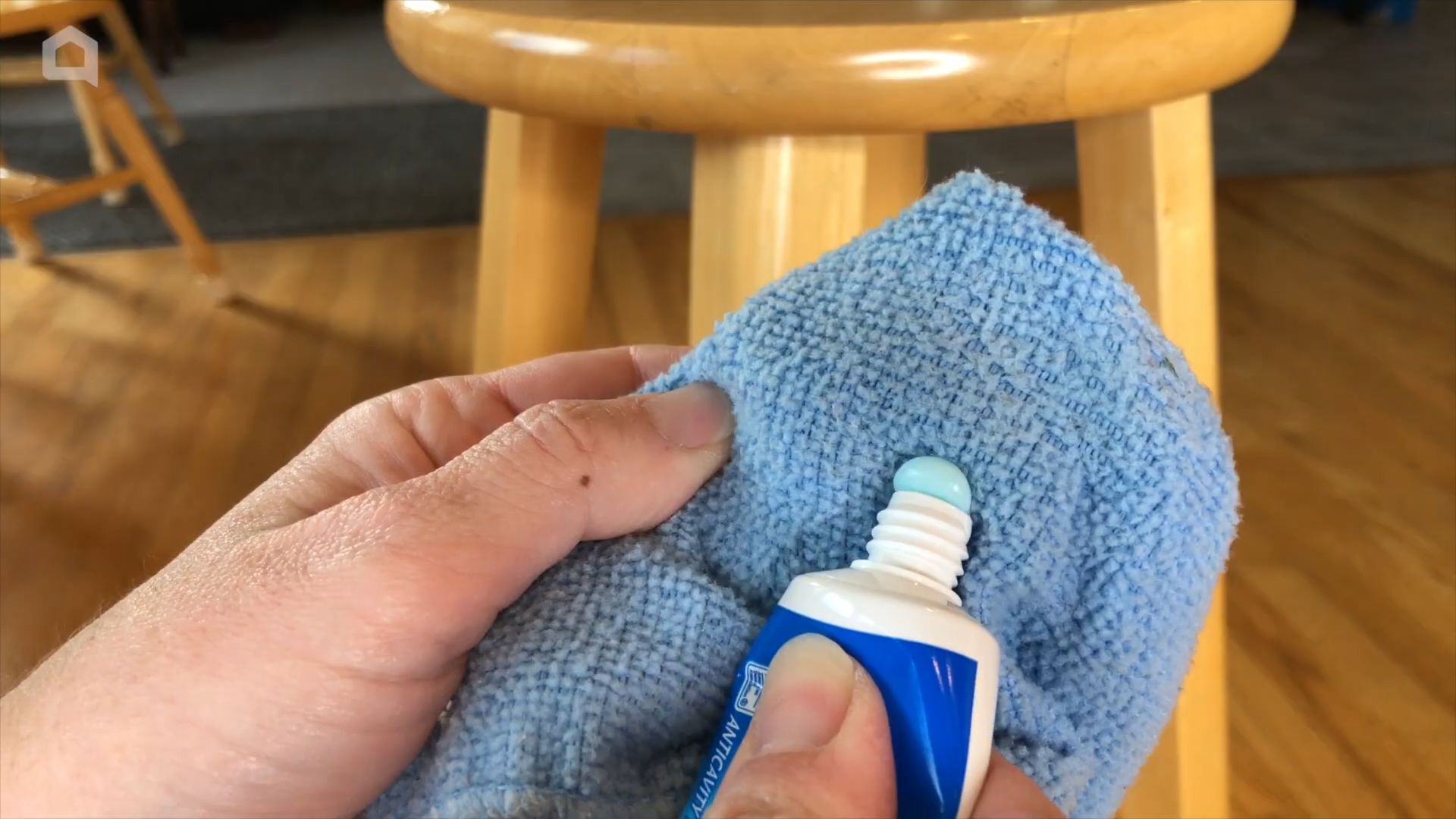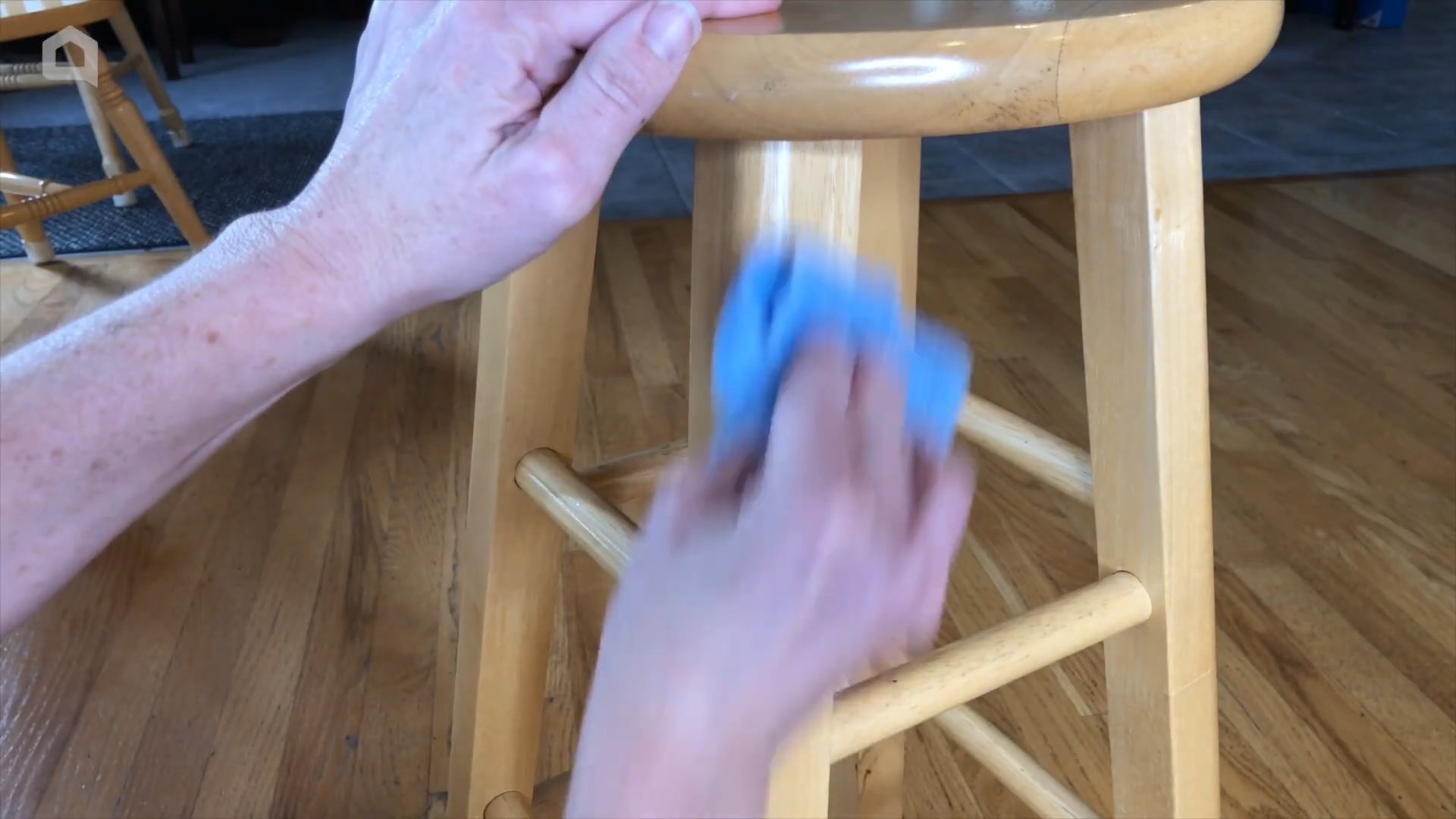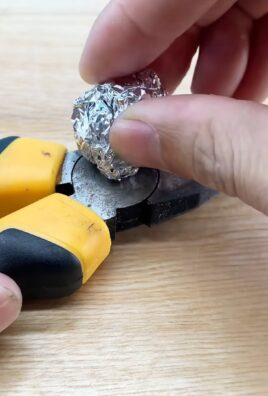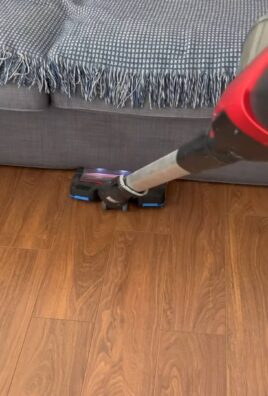Toothpaste Uses Besides Teeth: Who knew that the humble tube of toothpaste held so much potential beyond just keeping our pearly whites sparkling? I’m always on the lookout for clever DIY solutions around the house, and I was absolutely floored when I discovered the sheer versatility of this everyday item.
For generations, toothpaste has been a staple in our bathrooms, primarily for oral hygiene. But its history stretches back much further! Ancient Egyptians used a paste made of powdered ash, myrrh, and other ingredients to clean their teeth. While our modern formulas are a far cry from those early concoctions, the underlying principle remains the same: to cleanse and protect. But what if I told you that the same properties that make toothpaste effective for your teeth can also work wonders in other areas of your life?
Let’s face it, life gets messy! From stubborn stains to minor household mishaps, we’re constantly battling little annoyances. That’s where these amazing toothpaste uses besides teeth come in. Imagine effortlessly removing scuff marks from your shoes, polishing silverware to a brilliant shine, or even soothing minor burns – all with a simple dab of toothpaste. This article is packed with easy-to-follow DIY tricks and hacks that will not only save you time and money but also unlock the hidden potential of that tube sitting in your bathroom. Get ready to be amazed by the unexpected power of toothpaste!

Beyond the Brush: Unexpected Uses for Toothpaste Around Your Home
Okay, let’s be honest. We all know toothpaste is for keeping our pearly whites, well, pearly white. But did you know that humble tube of minty freshness is actually a secret weapon against all sorts of household woes? I’m going to let you in on some of my favorite unexpected uses for toothpaste – things that have saved me time, money, and a whole lot of frustration. Get ready to be amazed!
Cleaning and Polishing Powerhouse
Toothpaste, especially the non-gel kind, contains mild abrasives. These abrasives are gentle enough for your teeth but strong enough to tackle grime and tarnish on various surfaces. Think of it as a super-powered, budget-friendly cleaning agent.
Polishing Silverware and Jewelry
Tarnished silverware and jewelry can look dull and lifeless. Instead of buying expensive polishing solutions, grab your trusty tube of toothpaste.
Step-by-step instructions:
1. Gather your supplies: You’ll need toothpaste (non-gel is best), a soft cloth or toothbrush, and water.
2. Apply a small amount of toothpaste: Squeeze a pea-sized amount of toothpaste onto the tarnished item.
3. Gently rub: Using the soft cloth or toothbrush, gently rub the toothpaste onto the tarnished areas. Avoid using excessive pressure, especially on delicate jewelry.
4. Rinse thoroughly: Rinse the item thoroughly with warm water to remove all traces of toothpaste.
5. Dry and buff: Dry the item with a clean, soft cloth. Buff it gently to restore its shine.
I’ve used this trick on my silver earrings and they look brand new! Just be careful with delicate stones or pearls, as the abrasives in toothpaste could potentially scratch them.
Cleaning Chrome Fixtures
Water spots and soap scum can make chrome fixtures in your bathroom look grimy. Toothpaste to the rescue!
Step-by-step instructions:
1. Apply toothpaste: Apply a small amount of toothpaste directly to the chrome fixture.
2. Rub and scrub: Use a damp cloth or sponge to rub the toothpaste onto the affected areas. For stubborn spots, you can use a soft-bristled toothbrush.
3. Rinse well: Rinse the fixture thoroughly with water to remove all toothpaste residue.
4. Dry and shine: Dry the fixture with a clean cloth to reveal a sparkling shine.
I swear, my bathroom faucets have never looked better since I started using this trick. It’s so much easier than using harsh chemical cleaners.
Removing Scuff Marks from Leather Shoes
Those pesky scuff marks on your leather shoes can be a real eyesore. But don’t despair! Toothpaste can help.
Step-by-step instructions:
1. Apply a dab of toothpaste: Apply a small dab of non-gel toothpaste to a soft cloth.
2. Gently rub the scuff mark: Gently rub the toothpaste onto the scuff mark in a circular motion.
3. Wipe clean: Wipe away the toothpaste with a clean, damp cloth.
4. Buff dry: Buff the area dry with a soft cloth.
This works wonders on light-colored leather shoes. Just be sure to test it on a small, inconspicuous area first to make sure it doesn’t discolor the leather.
Cleaning Your Iron
Over time, your iron can develop a build-up of residue on the soleplate, which can transfer to your clothes. Toothpaste can help remove this residue and keep your iron working smoothly.
Step-by-step instructions:
1. Make sure the iron is cool and unplugged: This is crucial for safety!
2. Apply toothpaste: Apply a thin layer of non-gel toothpaste to the soleplate of the iron.
3. Rub gently: Use a damp cloth to gently rub the toothpaste onto the soleplate, focusing on areas with residue.
4. Wipe clean: Wipe away the toothpaste with a clean, damp cloth.
5. Turn on the steam function: Fill the iron with water and turn on the steam function to flush out any remaining toothpaste from the steam vents.
6. Wipe dry: Wipe the soleplate dry with a clean cloth.
I do this every few months to keep my iron in tip-top shape. It’s amazing how much gunk can build up on the soleplate!
Stain Removal Superhero
Toothpaste isn’t just for cleaning hard surfaces; it can also be surprisingly effective at removing certain types of stains from fabrics.
Removing Lipstick Stains
Accidentally smudged lipstick on your favorite blouse? Don’t panic! Toothpaste can help lift the stain.
Step-by-step instructions:
1. Apply toothpaste to the stain: Apply a small amount of non-gel toothpaste directly to the lipstick stain.
2. Let it sit: Let the toothpaste sit on the stain for about 10-15 minutes.
3. Gently rub: Gently rub the toothpaste into the stain with a soft cloth or toothbrush.
4. Rinse with cold water: Rinse the area with cold water to remove the toothpaste and the lipstick stain.
5. Launder as usual: Launder the garment as usual.
I’ve saved so many clothes from lipstick disasters with this trick! Just be sure to test it on an inconspicuous area first, especially on delicate fabrics.
Treating Minor Burns
Okay, this one might sound a little strange, but toothpaste can actually provide temporary relief from minor burns.
Step-by-step instructions:
1. Cool the burn: Immediately cool the burn under cold running water for several minutes.
2. Apply a thin layer of toothpaste: Apply a thin layer of non-gel toothpaste to the burn.
3. Leave it on: Leave the toothpaste on the burn until the pain subsides.
4. Rinse gently: Gently rinse the area with cool water.
The menthol in toothpaste can have a cooling and soothing effect on minor burns. However, it’s important to note that this is only for minor burns. For serious burns, seek medical attention immediately.
Defogging Mirrors and Glasses
Tired of foggy mirrors after a hot shower? Toothpaste can help prevent fogging.
Step-by-step instructions:
1. Apply a thin layer of toothpaste: Apply a very thin layer of non-gel toothpaste to the mirror or glasses.
2. Rub it in: Rub the toothpaste into the surface with a clean, dry cloth.
3. Wipe clean: Wipe away the toothpaste with a clean, damp cloth.
4. Buff dry: Buff the surface dry with a clean, dry cloth.
This creates a protective layer that prevents fog from forming. I do this to my bathroom mirror every few weeks, and it makes a huge difference!
Beauty and Personal Care Hacks
Believe it or not, toothpaste can also be used for a few unexpected beauty and personal care hacks.
Spot Treatment for Acne
Toothpaste can be a surprisingly effective spot treatment for acne.
Step-by-step instructions:
1. Cleanse your face: Cleanse your face thoroughly with your regular cleanser.
2. Apply a small amount of toothpaste: Apply a small amount of non-gel toothpaste directly to the pimple.
3. Leave it on overnight: Leave the toothpaste on overnight.
4. Rinse in the morning: Rinse your face in the morning with cool water.
The toothpaste will help dry out the pimple and reduce inflammation. However, it’s important to use this sparingly, as it can also dry out your skin. I only use this on particularly stubborn pimples.
Soothing Insect Bites
The cooling sensation of toothpaste can help relieve the itchiness and irritation of insect bites.
Step-by-step instructions:
1. Apply a small amount of toothpaste: Apply a small amount of non-gel toothpaste directly to the insect bite.
2. Leave it on: Leave the toothpaste on the bite until the itching subsides.
3. Rinse gently: Gently rinse the area with cool water.
This is a great natural remedy for mosquito bites and other minor insect bites.
Cleaning Fingernails
Toothpaste can help brighten and clean your fingernails.
Step-by-step instructions:
1. Apply toothpaste to your nails: Apply a small amount of toothpaste to your fingernails.
2. Scrub gently: Use a soft-bristled toothbrush to gently scrub your nails.
3. Rinse thoroughly: Rinse your nails thoroughly with water.
This will help remove stains and leave your nails looking brighter and healthier. I do this every now and then when my nails are looking a little dull.
Important Considerations
Before you go crazy using toothpaste for

Conclusion
So, there you have it! Beyond its primary purpose of keeping our pearly whites sparkling, toothpaste reveals itself as a surprisingly versatile tool around the house. From tackling stubborn stains to polishing surfaces and even soothing minor burns, the applications are truly remarkable. This isn’t just about saving a few bucks; it’s about discovering the hidden potential of a common household item and embracing a more resourceful approach to everyday challenges.
Why is this DIY toothpaste trick a must-try? Because it’s effective, readily available, and often gentler than harsh chemical alternatives. Think about it: you already have toothpaste in your bathroom. Why not leverage its cleaning and polishing power to address those annoying scuffs on your shoes, the tarnish on your silverware, or even the foggy headlights on your car? The possibilities are genuinely exciting.
Consider these variations to tailor the toothpaste trick to your specific needs:
* **For delicate surfaces:** Opt for a non-gel toothpaste without abrasive ingredients like baking soda. A simple white toothpaste is usually your best bet.
* **For extra cleaning power:** A dab of baking soda can be added to your toothpaste for a more potent scrubbing action, but use caution on easily scratched surfaces.
* **For stain removal on fabrics:** Test a small, inconspicuous area first to ensure the toothpaste doesn’t discolor the material.
* **For polishing jewelry:** Use a soft cloth and gentle circular motions to avoid scratching the metal. Rinse thoroughly and dry with a clean cloth.
We’ve explored just a few of the many ways you can unlock the power of toothpaste beyond oral hygiene. This simple DIY approach can save you money, reduce your reliance on harsh chemicals, and give you a newfound appreciation for the humble tube sitting on your bathroom sink.
Now, it’s your turn! We wholeheartedly encourage you to experiment with these toothpaste uses and discover even more creative applications. Don’t be afraid to try it on different surfaces and stains, always remembering to test in an inconspicuous area first. The beauty of this DIY trick lies in its adaptability and the potential for unexpected discoveries.
Most importantly, we want to hear about your experiences! Did you successfully remove a stubborn stain? Did you find a new and innovative way to use toothpaste around the house? Share your stories, tips, and photos in the comments below. Let’s build a community of resourceful individuals who are passionate about unlocking the hidden potential of everyday items. Embrace the power of **toothpaste uses besides teeth** and join the DIY revolution!
Frequently Asked Questions (FAQs)
Is it safe to use any kind of toothpaste for these DIY tricks?
Not all toothpastes are created equal. While most standard white toothpastes are generally safe for cleaning and polishing, it’s crucial to consider the ingredients. Avoid using gel toothpastes or those with excessive abrasives, especially on delicate surfaces. These can potentially scratch or damage the material you’re trying to clean. Look for a simple, non-gel toothpaste with minimal ingredients for the safest and most effective results. Always test in an inconspicuous area first to ensure compatibility.
Can I use toothpaste to remove stains from clothing?
Toothpaste can be effective for removing certain types of stains from clothing, particularly those caused by food, ink, or makeup. However, it’s essential to proceed with caution. Apply a small amount of toothpaste directly to the stain and gently rub it in with a soft cloth or toothbrush. Let it sit for a few minutes, then rinse thoroughly with cold water. Before applying toothpaste to the entire stain, test it on a hidden area of the garment to ensure it doesn’t cause discoloration or damage. Avoid using whitening toothpastes on colored fabrics, as they may bleach the material. For stubborn stains, you may need to repeat the process or try a different stain removal method.
Will toothpaste scratch surfaces like glass or metal?
The abrasiveness of toothpaste can vary depending on the brand and formulation. Some toothpastes contain abrasive ingredients like silica or baking soda, which can potentially scratch delicate surfaces like glass, metal, or painted surfaces. To minimize the risk of scratching, use a non-gel toothpaste with a smooth consistency and avoid excessive pressure when applying it. Always test in an inconspicuous area first to assess the potential for scratching. For polishing delicate metals like silver or gold, use a soft cloth and gentle circular motions. Rinse thoroughly and dry with a clean cloth to remove any residue.
Is toothpaste effective for cleaning bathroom fixtures?
Yes, toothpaste can be a surprisingly effective cleaner for bathroom fixtures like faucets, showerheads, and sinks. Its mild abrasive properties can help remove soap scum, water stains, and mineral deposits, leaving your fixtures sparkling clean. Apply a small amount of toothpaste to a damp cloth or sponge and gently scrub the surface. Rinse thoroughly with water and dry with a clean cloth. For stubborn stains or mineral buildup, you may need to let the toothpaste sit for a few minutes before scrubbing. Avoid using toothpaste on porous surfaces like marble or natural stone, as it may damage the finish.
Can toothpaste help with minor burns?
Toothpaste can provide temporary relief from minor burns by creating a cooling sensation and helping to protect the skin. Apply a thin layer of toothpaste to the affected area and let it dry. The toothpaste will help to draw heat away from the burn and reduce inflammation. However, it’s important to note that toothpaste is not a substitute for proper medical treatment. For severe burns, seek immediate medical attention. Avoid using toothpaste on open wounds or broken skin, as it may cause irritation or infection.
How do I remove toothpaste residue after cleaning?
Removing toothpaste residue is crucial to prevent a dull or sticky finish. After cleaning with toothpaste, rinse the area thoroughly with clean water. Use a damp cloth or sponge to wipe away any remaining residue. For hard-to-reach areas, you can use a cotton swab or toothbrush to remove the toothpaste. Dry the surface with a clean, dry cloth to prevent water spots. If you notice any lingering residue, you can try using a mild soap and water solution to remove it.
Are there any surfaces I should avoid cleaning with toothpaste?
Yes, there are certain surfaces that you should avoid cleaning with toothpaste to prevent damage or discoloration. These include:
* **Porous surfaces:** Marble, natural stone, and unsealed wood can absorb toothpaste, leading to staining or discoloration.
* **Painted surfaces:** Abrasive toothpastes can scratch or dull painted surfaces.
* **Delicate plastics:** Some plastics can be scratched or damaged by toothpaste.
* **Electronics screens:** Avoid using toothpaste on electronic screens, as it can damage the coating.
* **Leather:** Toothpaste can dry out and crack leather.
Always test in an inconspicuous area before applying toothpaste to any surface, and avoid using it on materials that are known to be sensitive or easily damaged.
Can I use toothpaste to polish my car headlights?
Yes, toothpaste can be used to polish cloudy or yellowed car headlights. The mild abrasives in toothpaste can help remove oxidation and restore clarity to the plastic lens. Apply a small amount of toothpaste to a damp cloth and rub it onto the headlight in circular motions. Rinse thoroughly with water and dry with a clean cloth. You may need to repeat the process several times to achieve the desired results. For best results, use a polishing compound specifically designed for car headlights.



Leave a Comment